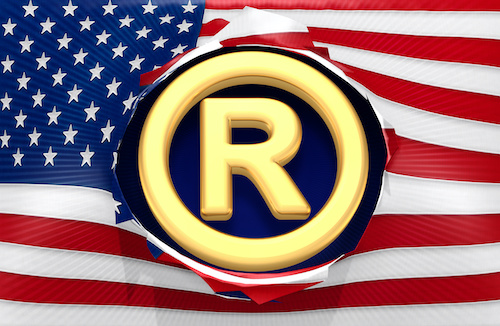The Trademark Race in Generated AI: Positioning yourself for future success
“Recent data from global trademark offices unveils significant shifts in the landscape of GenAI-related trademark applications, offering a glimpse into how businesses are navigating the rapidly evolving AI sector.”
Generative AI is one of the most transformative technologies of our time, reshaping the way businesses create, innovate, and compete. As organizations integrate AI in their operations, they are faced with a dynamic business environment driven by technological advances and changing market demands. In this fast-paced landscape, staying ahead of the curve is essential for businesses to remain competitive and protect their intellectual property.
Trademark law, which is deeply impacted by these technological shifts, is evolving in tandem with the rise of Generative AI. Understanding the latest trends in trademarks protection is more important now than ever as we approach 2025. For startups and established corporations alike, safeguarding unique assets in a competitive market is crucial for maintaining a strong and recognizable brand presence.
Aligning trademark strategies with current trends–particularly those shaped by technological innovation like AI–can help businesses not only protect their intellectual property but also enhance brand recognition and build consumer trust. In a market driven by constant innovation and shifting consumer preferences, staying in the know and being agile are key to ensuring that your brand remains relevant and secure. These trends offer a roadmap for businesses seeking to adapt and succeed in the evolving landscape of Generative AI.
Note:
The data and insights presented in this article reflect trademark filings up until August 13, 2024 and were compiled using the paid database, Markify, for trademark filings. To identify GenAI trademark filings, we selected relevant keywords related to Goods & Services, such as “GenAI,” “Generative AI,” and “Generative Artificial Intelligence,” and conducted searches using these terms.A Major Increase in Trademark Filings
Recent data from global trademark offices unveils significant shifts in the landscape of GenAI-related trademark applications, offering a glimpse into how businesses are navigating the rapidly evolving AI sector. The number and nature of these trademark filings demonstrate not only the growth of AI technology but also the importance of protecting intellectual property in an uncertain and competitive market. These filings have increased by 1000% since 2021. This shows that companies are not just responding to the increasing influence of AI, but also positioning themselves for market dominance. This swift increase reflects a proactive approach to branding, as businesses race to carve out their identity in a space that is rapidly becoming essential to future growth and innovation.
Figure: Global GenAI Trademark Filing Trends (2015-24)
Leading Jurisdictions: The United States and China at the Forefront
The United States and China remain the dominant forces in the global GenAI trademark landscape, jointly accounting for 64.62% of all filings. This significant share reflects their strategic focus on securing technology leadership in the rapidly evolving AI sector. Similar to patent filing trends, these countries continue to lead the charge in protecting intellectual property to maintain competitive dominance.
However, the increasing number of filings from jurisdictions like India, South Korea, Indonesia, and Australia signals a noteworthy shift. These emerging regions are increasingly aware of the importance of intellectual property and brand protection in fostering innovation and securing competitive advantage. This trend mirrors the growing global recognition of the need to safeguard AI advancements, as businesses and governments worldwide seek to enhance their economic standing and market influence in the evolving digital economy.
Figure: Top 10 Jurisdictions for GenAI Trademark Filings
Decoding Trademark Classes: Where GenAI is Making Its Mark
The influence of Generative AI now reaches far beyond the tech sector. AI, initially adopted by technology companies is now transforming industries like healthcare, entertainment and finance. Trademark filings underscore this shift, revealing how diverse sectors are leveraging AI to drive innovation and differentiation.
Scientific and technological services lead in filings, reflecting the technology’s extensive use in research and development. These trends show how generative AI is reshaping industries, fostering technological advancements, and enabling new business models. These trends illustrate how generative AI is reshaping industries, fostering technological advancements, and enabling new business models.
Figure: Top 10 GenAI Trademark Filings by Product Class
Top Sectors:
Class 42 (Scientific and technological services)
and
- Class 09 (Computers, software, and scientific instruments) account for over half the filings (55.38%) – a clear signal that we’re witnessing a profound technological transformation.But it’s not just about pure tech; Classes 35 (Advertising, business management, and business administration)
- and Class 41 (Education and entertainment) follow closely reflect the importance of branding and consumer engagement in today’s business landscape.Breakdown of Trademark Classes for GenAI:Who’s Leading the GenAI Trademarks
Race
Tech giants have emerged as early leaders in the Generative AI trademark race. Amazon, Microsoft and OpenAI are among the companies that have taken decisive action to secure their IP portfolios in major jurisdictions. This has cemented their dominance for the GenAI-driven future. However, global competition is heating up, with Chinese players like Luosiyang Technology Co., Ltd. and Dongguan Genai Technology Co., Ltd. also making their mark as key players in this space. Figure: Leading Companies in GenAI Trademark Filings
OpenAI’s Strategic Global Trademark Approach
OpenAI’s trademark approach is strategic and forward-thinking. They are not just filing trademarks, but crafting a global story. From mature tech markets like the US and Japan to emerging economies in India and Brazil, their strategy reflects a sophisticated understanding that today’s innovation is tomorrow’s global opportunity.
Figure: OpenAI’s TM Volume by Jurisdiction
Key Highlights of OpenAI’s Strategy:
Global Reach:
Filings across North America, Europe, and Asia.
- Mature Market Focus: Targeting established tech hubs like the US, UK, and Japan.
- Emerging Markets: Expanding into India, Brazil, and Indonesia for future opportunities.
- Regional Strategies: Utilizing platforms like the EUIPO and OAPI for efficient IP protection across multiple jurisdictions.
- Interestingly, OpenAI had faced a setback in its attempt to trademark the term “GPT” (short for generative pre-trained transformer). The US Patent and Trademark Office denied the application because the term was too generic to be registered exclusively. The USPTO expressed concerns that granting trademark rights for “GPT” could restrict competitors from accurately describing their own products that use similar generative AI technology.What this Means for Business
The analysis of trademark data reveals several critical insights that businesses should take into account as they navigate the evolving AI landscape:
1. GenAI’s Expanding Importance Across Industries
The expansion of generative AI beyond the tech sector highlights its emergence as an enabler of sector-specific transformation. GenAI’s versatility allows it to seamlessly integrate across industries, unlike earlier waves of innovation that often required specialized adaption. In healthcare, GenAI powers personalized medicine while in entertainment it creates immersive experiences. This cross-industry application points to a future in which AI is not only a tool, but a foundational layer for operational and strategic decision making. Businesses must consider how to embed AI into their core processes rather than treat it as a standalone capability.
2. The Need for a Global Approach to Protecting AI Innovations
The concentration of filings in leading jurisdictions like the United States and China, alongside growth in emerging regions such as India, South Korea, and Indonesia, signals a shift in global trademark dynamics. It is not enough to protect trademarks in key markets. Companies must also anticipate where generative AI adoption growth will occur and ensure early trademark protection in those regions. Businesses should also explore how trademarks are aligned with intellectual property strategies. This is especially important as GenAI innovations blur product, service, and platform lines. A pivotal moment to establish leadership in AI
The current surge of filings reflects more than just a race for presence. It reflects a fight for enduring relevancy. Businesses must consider how their innovations can influence industry standards, especially as generative AI is advancing at a rapid pace. It is less important to protect isolated solutions at this moment than it is to foster frameworks and ecosystems which will drive AI adoption across all sectors. The data shows not only the increasing influence of GenAI, but also the strategic imperatives that businesses must adapt. Organizations that proactively embrace these trends are likely to emerge as leaders in the AI-driven economy.
Looking Forward
The dramatic increase in GenAI trademark filings shows that we’re at an important moment in technological development. Companies of all sizes and types are finding ways to use AI in their work, and they’re moving quickly to protect their innovations.
For businesses watching these trends, the message is clear: GenAI is becoming a fundamental part of how companies operate and compete. Understanding these changes and planning accordingly will be crucial for future success.
Image Source: Deposit Photos
Author: iqoncept
Image ID: 667202546












